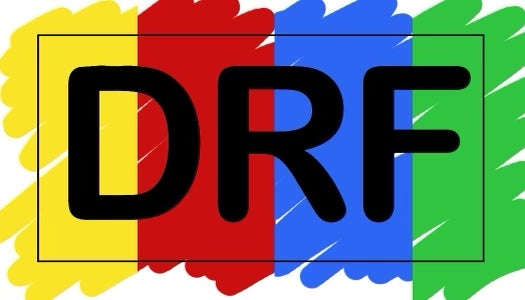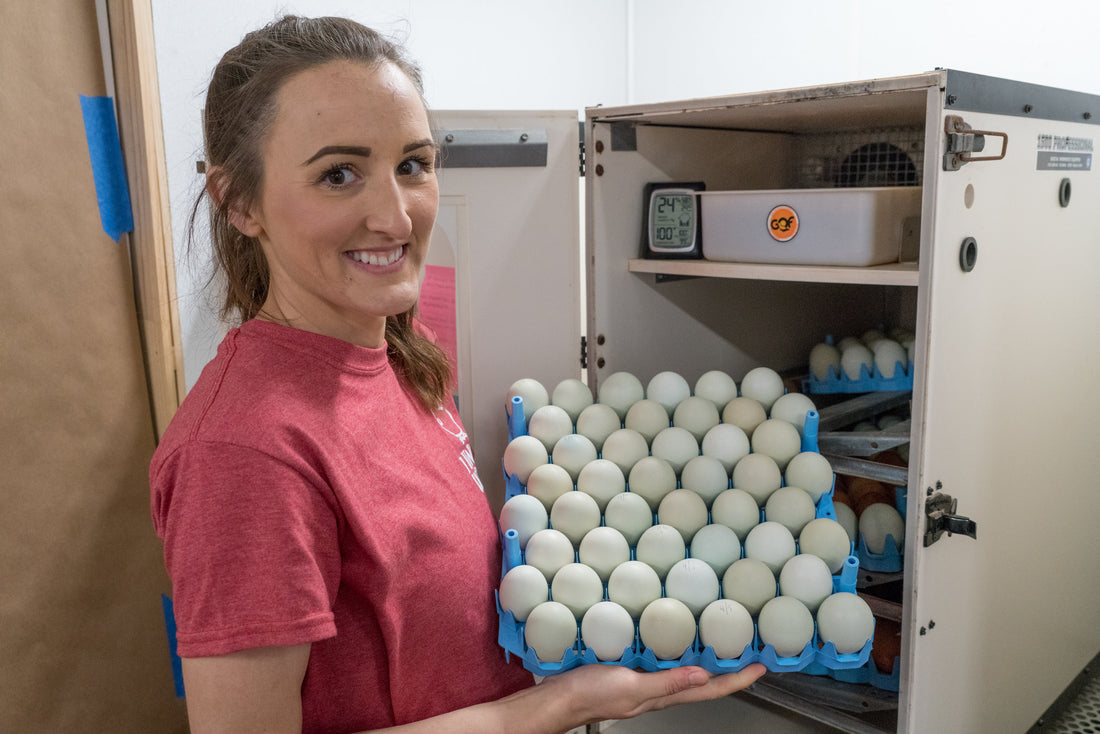Deer Run Farm Presents The Egg-ucated Chicken's,
"Hatchery Hygiene"

Hatchery hygiene plays an important role in protecting the hatchability of fertilized eggs, mortality of embryos and day old chicks, and the overall spread of disease on your property.
Your hatchery environment is routinely subjected to microbial contamination due to various sources and factors including air, water, chick down and personnel. The highest microbial counts are usually found on the floor, table surfaces and inside equipment. A plan to provide adequate cleaning, sanitization and disinfection processes in between and during hatches is necessary to reduce the risks associated with microbial contamination.

Understanding Egg & Chick Contamination
Hatching eggs are recognized as the predominant reservoir and potential vehicles of pathogenic microbials. Egg and chick contamination occur through various pathways:
- Externally through pores or hairline cracks in the egg shell.
- Vertical transmission from infected flocks, usually passed on from the hen to the egg.
- Internal contamination of the yolk or albumen.
- Vectors such as hands, trays, vermin and other equipment and surfaces.
Maintaining a clean and sanitized hatchery can reduce the likelihood of contamination through any of these pathways.
Externally: Disinfected surfaces and equipment eliminate the possibility of eggs absorbing any bacteria through their shells. Should an egg become infected externally during incubation it should be removed immediately. Contaminated eggs that develop bacterial infections are similar to that of a ticking time bomb. The rapid growth of bacteria causes a buildup of hydrogen sulphide which can cause the egg to explode without warning. Eggs in the same incubator are at risk of becoming contaminated from either the explosion of the contaminated egg or even just from the gases that the contaminated egg is omitting into the incubator’s atmosphere.
Vertical Transmission: So long as the original flock in which eggs will be incubated from are healthy and disease-free, vertical transmission of contamination is more or less simply managed through maintaining a clean and sanitized hatchery. Incubation of eggs received from an unknown flock should be incubated separately from known flock’s eggs to avoid cross contamination.
Internal Contamination: Maintaining a clean and sanitized hatchery includes the removal of internally contaminated eggs and chicks. When an egg or chick is recognized to be infected removing it will benefit the others by discontinuing it’s ability to spread bacteria. For instance, an egg that’s been internally contaminated is able to release it’s bacterial gases into the incubator through it’s pores. Other eggs that are in the same incubator are then at risk of absorbing the bacteria also.
Vectors: Keeping all surfaces, equipment, tools, hands and other objects that come in contact with the eggs and chicks clean and disinfected is important to reduce the possibility of vector contamination. Having a plan to reduce or eliminate vermin in the hatchery is necessary to maintaining a healthy environment for eggs and chicks to grow. Vermin can be carriers of several diseases that should not be passed on to chickens.
The nature of a hatchery provides the perfect atmosphere for bacteria to grow and thrive. With incubators running at 99-100^F and humidity levels varying between 40-80% at any given time, living bacteria can replicate rapidly and double it’s population within 20 minutes. Hatching eggs that are exposed to these bacterias have a higher mortality rate than those that aren’t. Maintaining proper cleaning, sanitizing and disinfecting practices in the hatchery can significantly decrease the likelihood of hatching eggs being exposed to bacteria and ultimately increase the hatchability of the fertilized eggs.
Practices to Maintain Good Hatchery Hygiene
To eliminate the risk of egg, equipment and facility contamination it is important to put a cleaning, sanitization and disinfection plan into place during your hatch season. This hygiene plan will only be effective if it’s regularly conducted. Forms of cleaning are removing particles from surfaces by sweeping, moping, dusting and wiping. To sanitize is to reduce growth of bacteria by thoroughly cleaning surfaces with chemicals. Disinfecting will kill bacteria on surfaces and equipment with stronger chemicals like bleach or hydrogen peroxide.
When implementing a hygiene plan it’s best to avoid cleaning tools such as scrubbers, sponges and clothes as they are more likely to harbor larger numbers of bacteria after use. Ready-to-use disinfectant wipes are a good alternative. Some soaps, such as body wash, should not be used as part of a hatchery hygiene plan either as they’re likely to leave residues on surfaces and equipment that provide nutrients for contaminating microbes to utilize and multiply.
A Basic Cleaning Protocol:
1. Clean and remove residues on hatchery surfaces and equipment. Both physical and chemical cleaning is necessary for effective sanitization.
2. Sanitize and disinfect hatchery surfaces and equipment. Thoroughly clean the surfaces with chemicals to sanitize and apply chemicals such as bleach or Tek-trol to disinfect afterwards.
3. Conduct critical activities in separate areas to avoid cross contamination or microbial transfer from equipment to equipment or room to room.
4. Clean and store hatchery equipment in a dry, cool area when not in use. Remember to clean and disinfect hatchery equipment before use after it’s been stored away for a while.
5. The best, cheapest and easiest method of disinfecting an incubator is to fumigate using bleach. Simply concoct a 10%-20% bleach solution and spray your incubator with it. Turn on your incubator and allow it to run empty at 100^F to circulate the fumes that the bleach will put off when heated up. The chemicals in the air will kill any bacteria that’s been left in the incubator.
6. Routinely conduct your cleaning protocol during and in between hatches to maintain it’s effectiveness.


